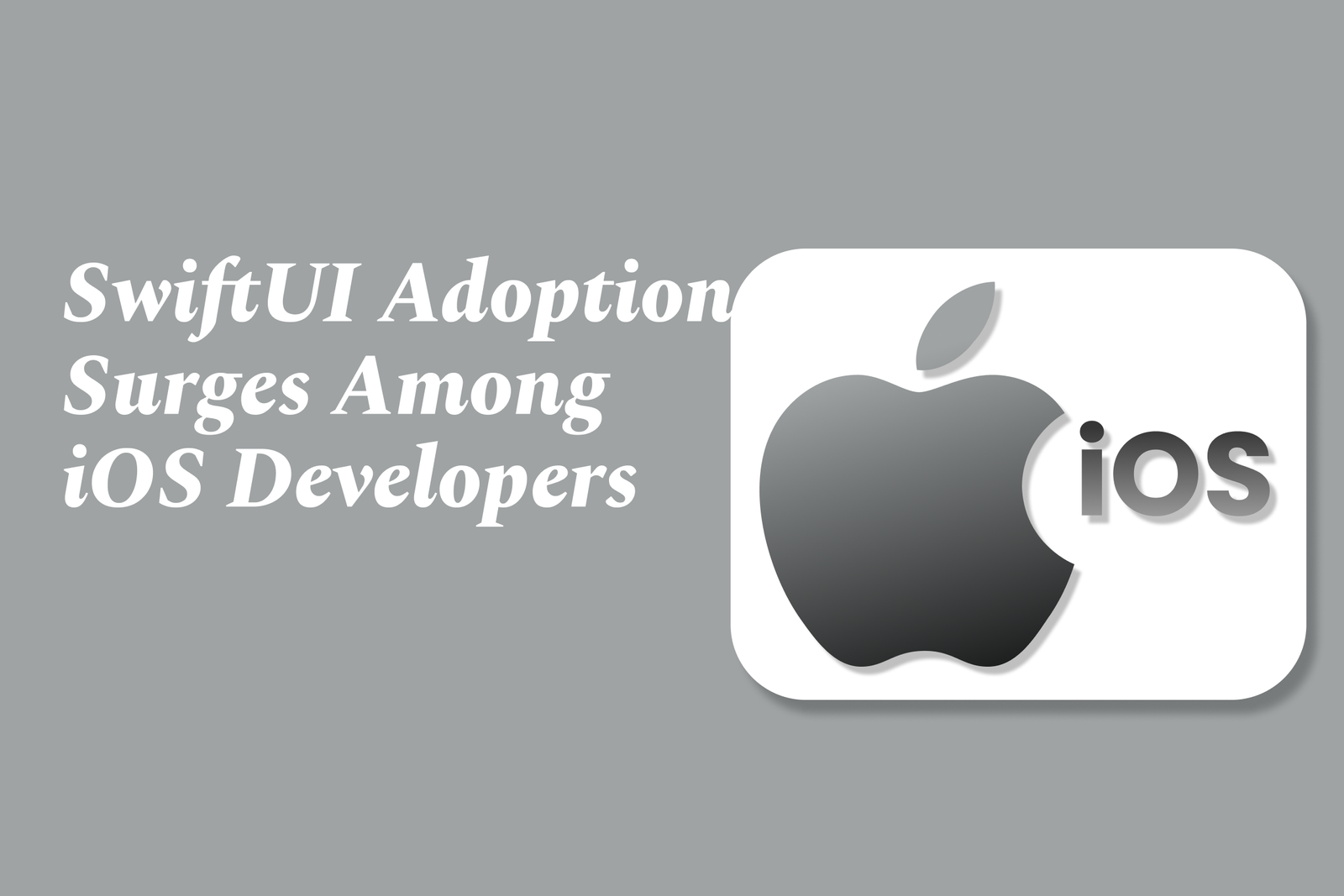SwiftUI adoption surges among iOS developers
SwiftUI adoption is rapidly increasing among iOS developers due to its modern, declarative syntax and seamless integration with Apple platforms. Despite some limitations, more developers are embracing SwiftUI for faster, more intuitive UI design and future-proof app development.
SwiftUI Adoption Surges Among iOS Developers
1 ) The Current State of SwiftUI vs UIKit
SwiftUI, introduced in 2019, has rapidly gained attention for its modern, declarative approach to building user interfaces across Apple platforms. It represents the future of iOS and macOS app development by allowing developers to create UI code that is more intuitive and easier to maintain compared to UIKit's imperative style.
However, UIKit remains essential in many projects due to:
Its broad and mature API coverage, supporting features not yet available in SwiftUI (camera access, barcode scanning, gestures).
Compatibility with older iOS versions (prior to iOS 13 ), which SwiftUI does not support fully.
Established adoption across the industry and large application bases that still rely heavily on it.
2 ) Challenges Hindering Complete SwiftUI Adoption
The main obstacles slowing SwiftUI's complete takeover include:
Limited API Coverage: SwiftUI does not yet cover all UI capabilities, especially for complex and edge case functionalities. Workarounds exist but can be cumbersome.
Performance and Stability Concerns: Early versions struggled with bugs, lack of documentation, and performance issues, particularly for sophisticated UI requirements.
SwiftUI's Ties to iOS Versions: New SwiftUI features are often tied to the latest iOS releases, making development for apps supporting older versions difficult.
macOS Support Limitations: SwiftUI shows clear bias toward iOS and iPadOS; macOS implementations have experienced pain points and design challenges.
3 ) Community and Industry Feedback
Developers express a mix of enthusiasm and caution:
Many appreciate SwiftUI’s simplified syntax and reactive design principles but are wary of its “greenness” and missing features.
Some developers have begun gradually rewriting existing UIKit apps with SwiftUI or using hybrid approaches.
The design paradigm shift from imperative (UIKit) to declarative (SwiftUI) poses a learning curve and resistance within the iOS developer community.
4 ) Comparisons and Future Outlook
Compared to Android’s Jetpack Compose, SwiftUI’s integration with iOS creates adoption hurdles due to OS version dependencies.
Industry experts anticipate continuing incremental improvements from Apple, expanding SwiftUI API coverage and stability.
The expectation is that within a few more years, SwiftUI will likely surpass UIKit in adoption, especially as Apple improves tooling and documentation.
For now, knowledge of both UIKit and SwiftUI remains essential for iOS developers, particularly in professional environments.
Summary:
SwiftUI heralds a transformative shift in Apple UI development with growing adoption driven by its modern design and developer friendly features. Nonetheless, UIKit’s maturity and broader capabilities keep it highly relevant. As Apple iteratively enhances SwiftUI and addresses its current limitations, developers are increasingly embracing it—though most still maintain UIKit familiarity to bridge gaps. The path to SwiftUI dominance is well underway but remains graduated, balancing innovation with practical realities of app development today.
https://justacademy.in/news-detail/react-native-expo-app-improvements-that-matter-most
https://justacademy.in/news-detail/react-native-and-kotlin-multiplatform:-perfect-together?
https://justacademy.in/news-detail/android-security-best-practices-updates
https://justacademy.in/news-detail/ios-security-best-practices-for-2025
https://justacademy.in/news-detail/android-smart-home-integration-updates
Related Posts
Java supports GDPR and data privacy by enabling secure data handling through encryption, controlled access, and precise data management. It allows developers to minimize PII exposure, ensure data confidentiality, and design workflows that comply with data protection regulations effectively.
Java code quality tools have evolved to include advanced static analysis, integrated security checks, and AI-powered code reviews. These updates help developers detect bugs, enforce coding standards, and enhance security, streamlining the development process and improving overall code reliability.
Java remains a cornerstone in big tech companies, evolving with modern features like records, pattern matching, and virtual threads. Its robust ecosystem, enhanced performance, and growing AI integrations keep it vital for both legacy systems and innovative new projects.
Java and CI/CD pipeline optimizations streamline Java application development by automating builds, tests, and deployments. They improve efficiency through parallelization, caching, and secure secrets management, enabling faster feedback loops and more reliable, scalable software delivery.
Java supports modern cryptography standards through its flexible Java Cryptography Architecture (JCA), enabling integration of advanced algorithms like AES, EdDSA, and post-quantum tools. Libraries like Bouncy Castle offer FIPS-certified, hardware-accelerated implementations for secure development.
Java 23 enhances record patterns by enabling concise, direct destructuring of record components within pattern matching, simplifying type checks and data extraction. This improvement boosts code readability and expressiveness by reducing boilerplate in handling immutable data classes.
Java remains a top choice for mobile app backends, powering scalable, secure, and high-performance server-side solutions. Latest trends include cloud-native microservices, reactive programming, and enhanced JVM optimizations, enabling efficient, flexible, and robust mobile backend development.
Java SE 24 and LTS Java SE 21 offer enhanced features and performance, while Apache Spark 4.0.0 introduces Scala 2.13 support and advanced ML and SQL capabilities. Together, they empower developers to build scalable, high-performance data applications with modern tools.
JUnit 5 modernizes Java testing with a modular architecture, improved assertions, and seamless Java 8+ support. Beyond JUnit, tools like Mockito and AssertJ enhance mocking and assertions, creating a powerful, flexible ecosystem for writing clean, efficient Java unit tests.
Java plays a pivotal role in cloud automation tools by providing a robust, platform-independent language used to build scalable automation frameworks like Jenkins and Selenium, enabling efficient CI/CD pipelines, testing, and orchestration across diverse cloud environments.










